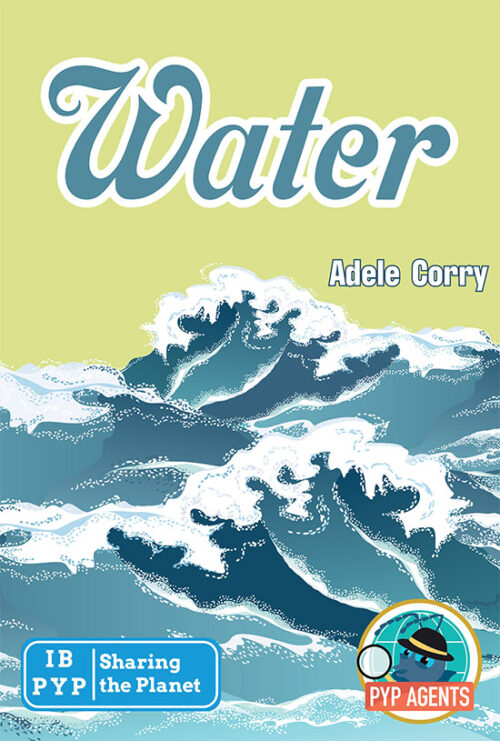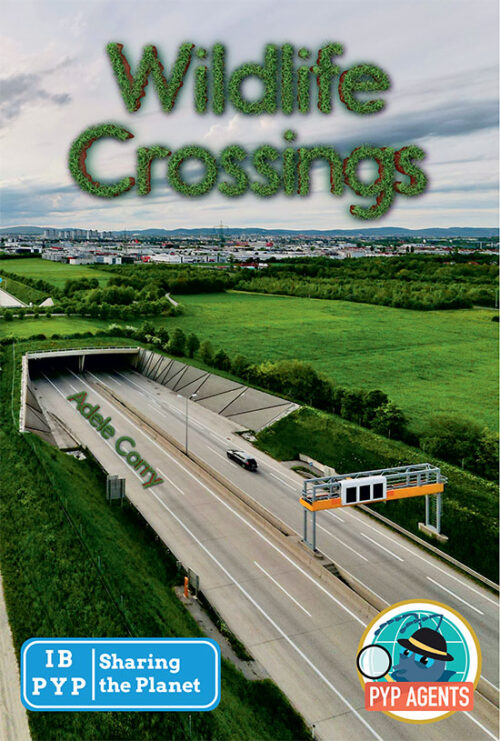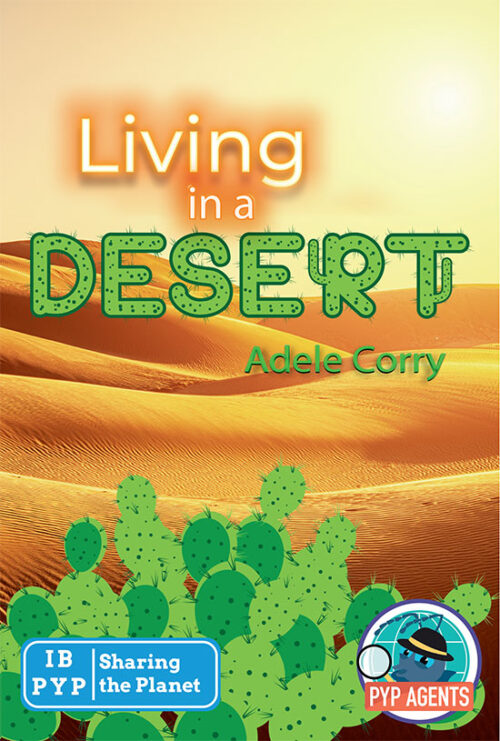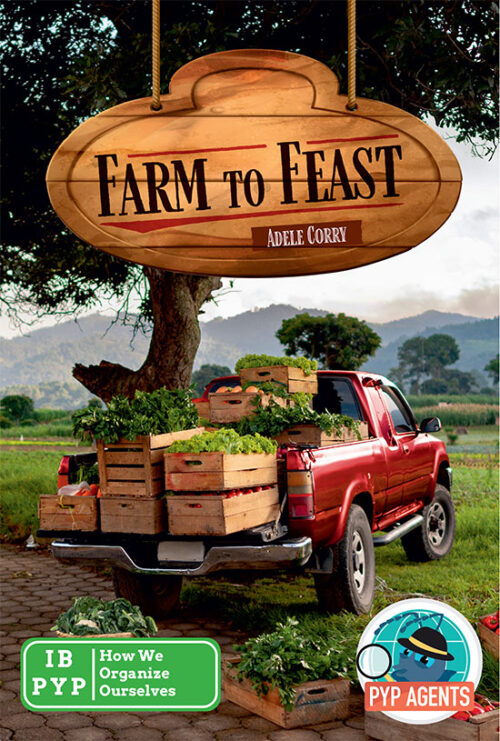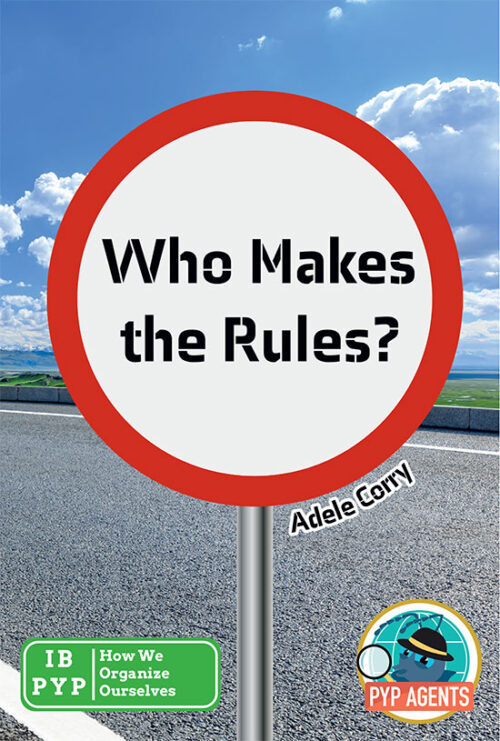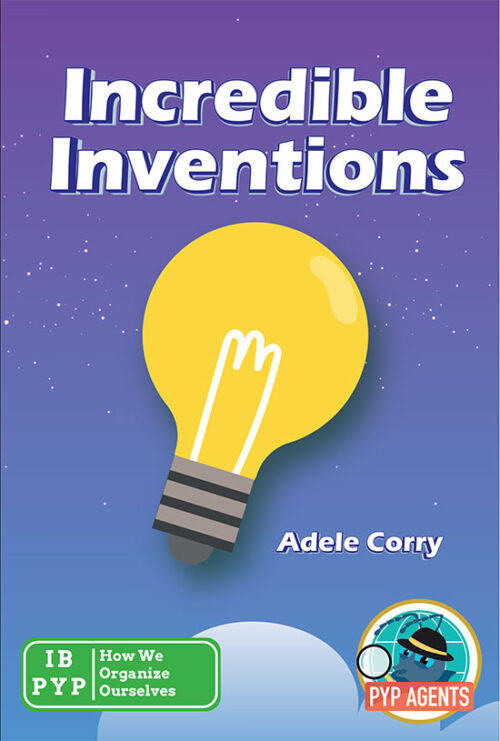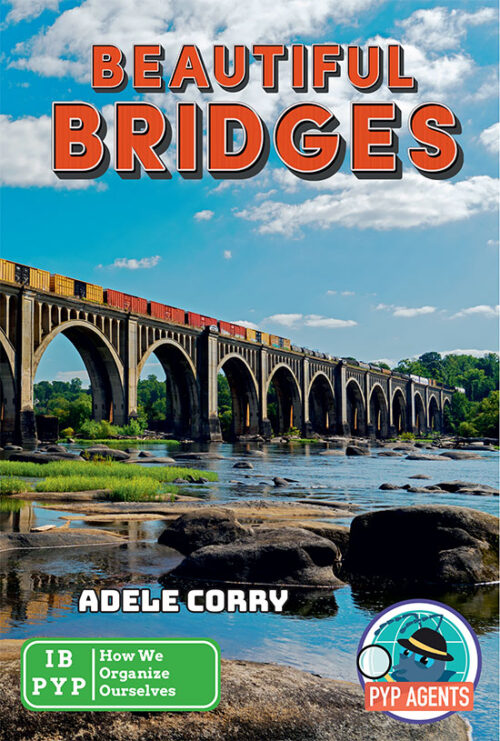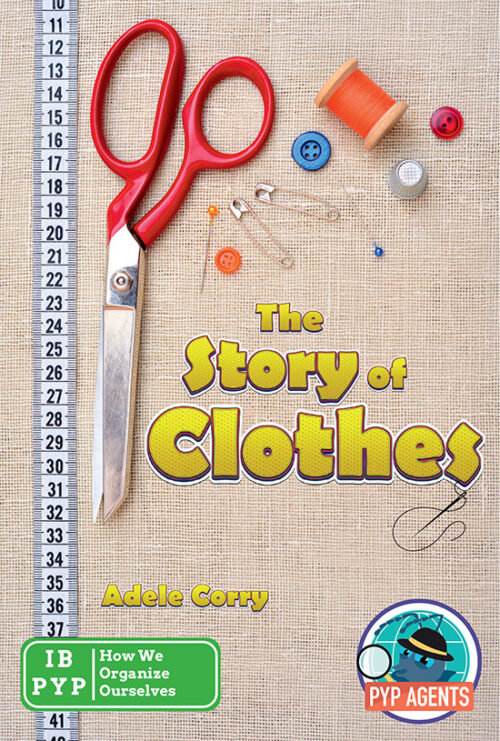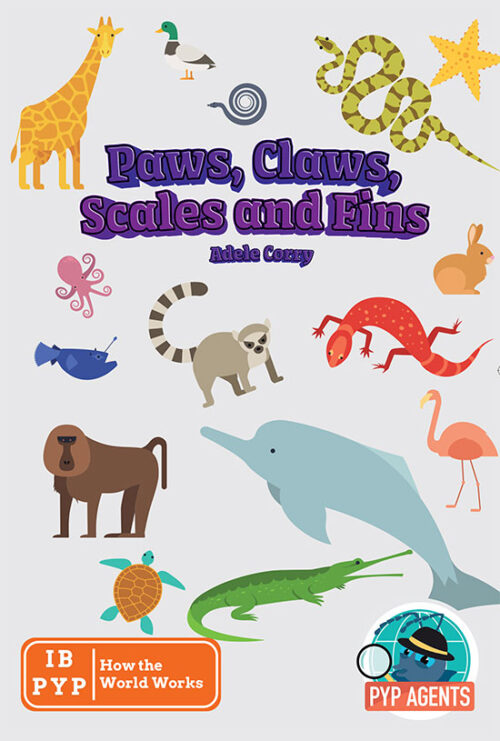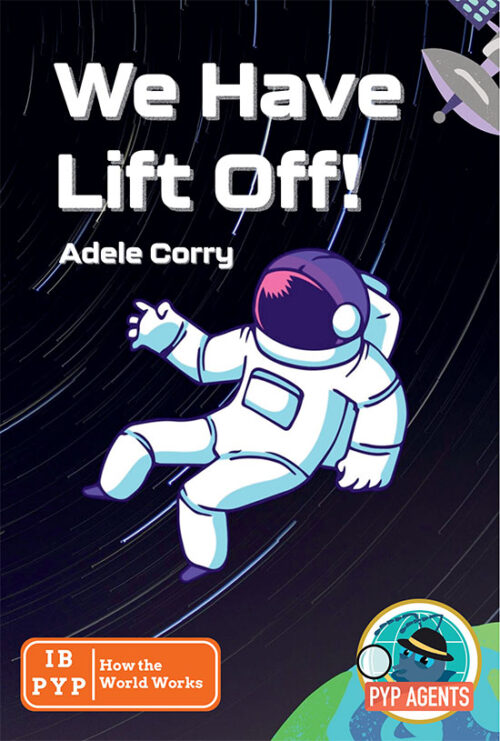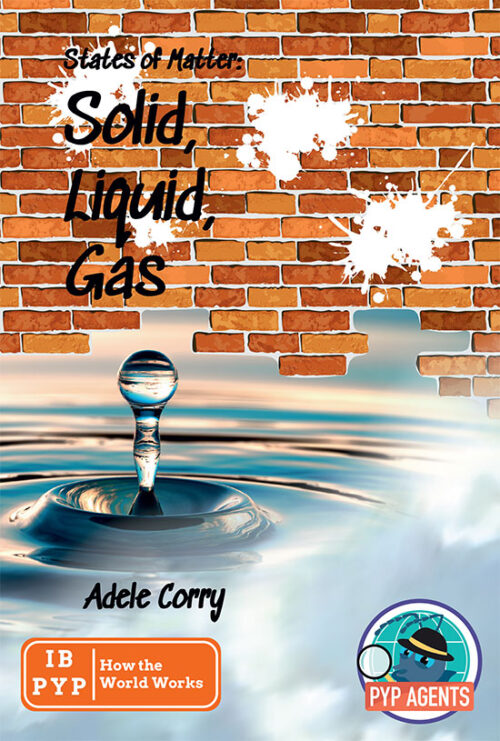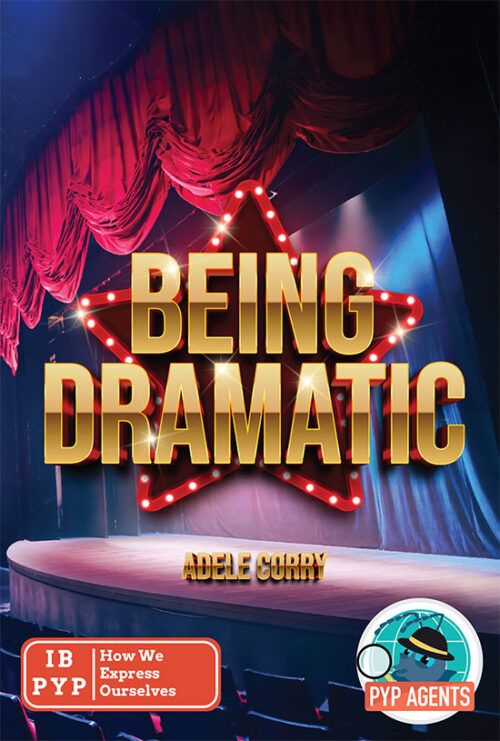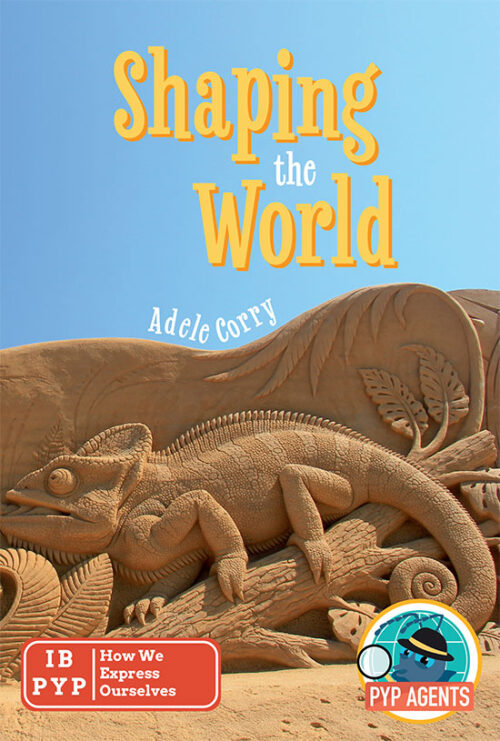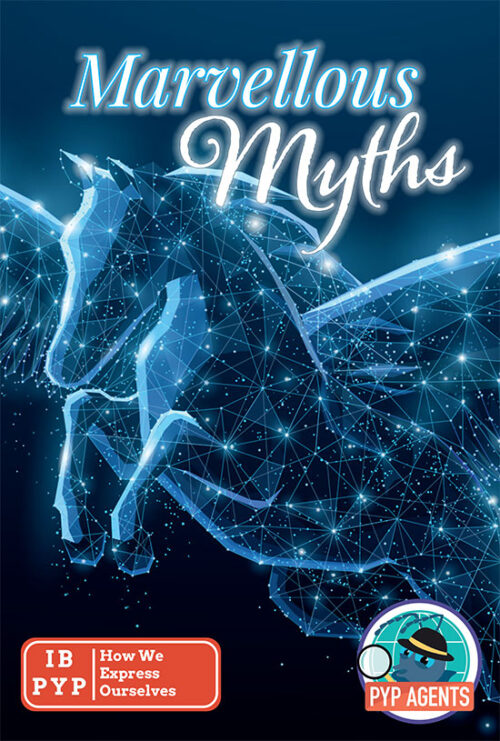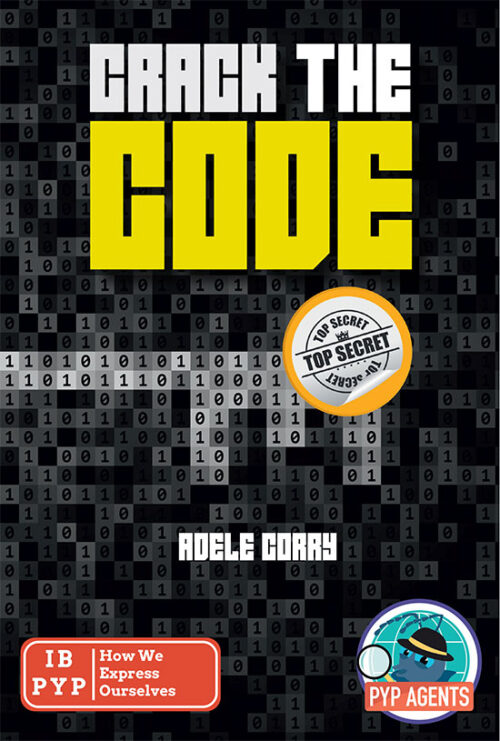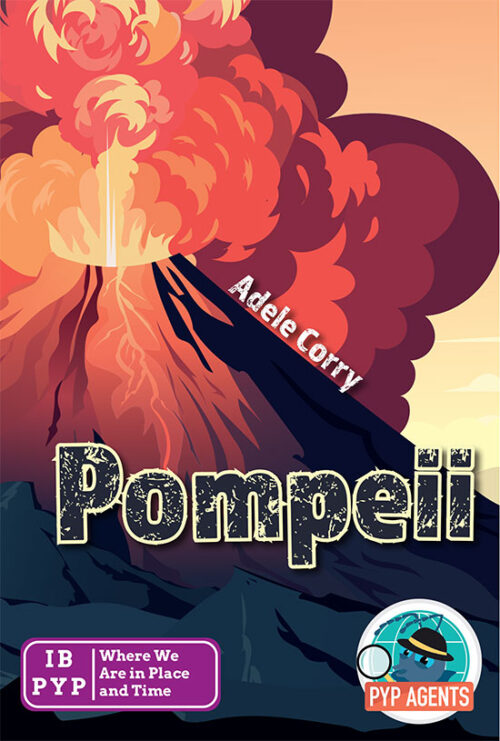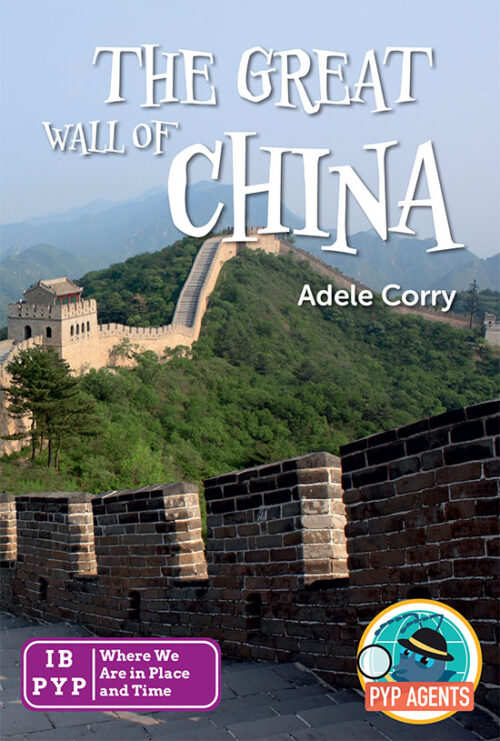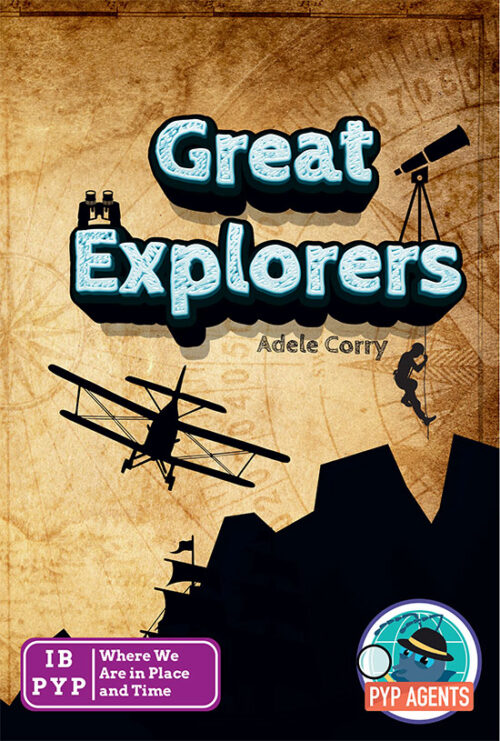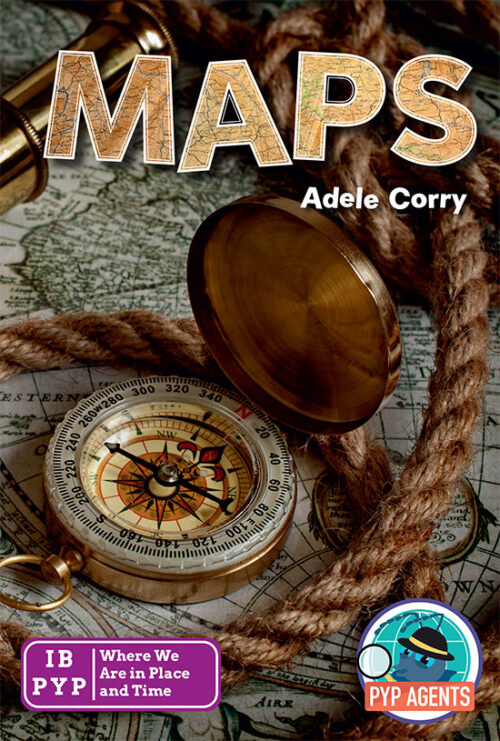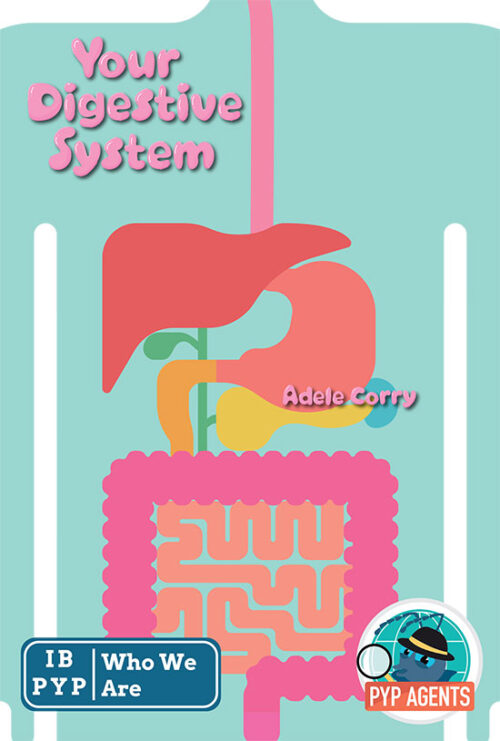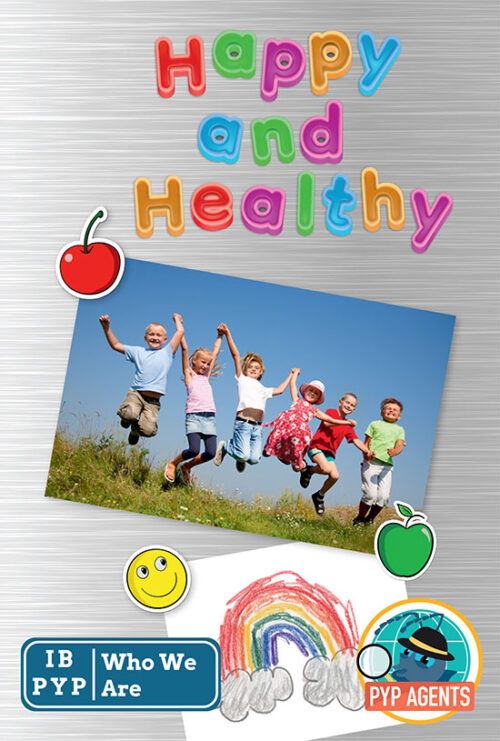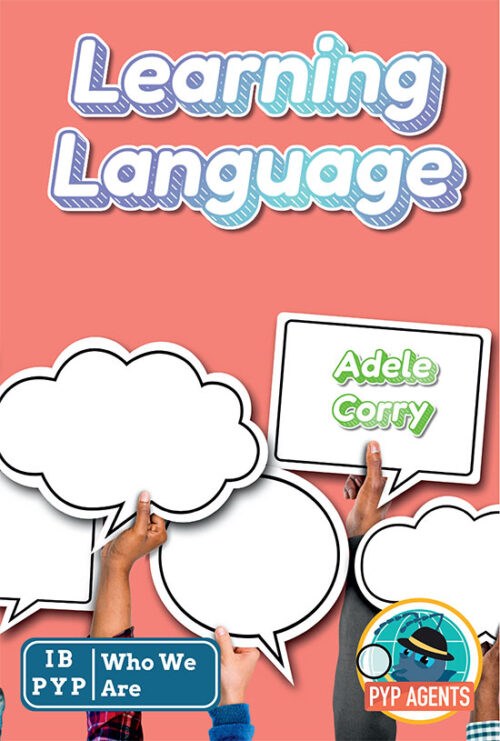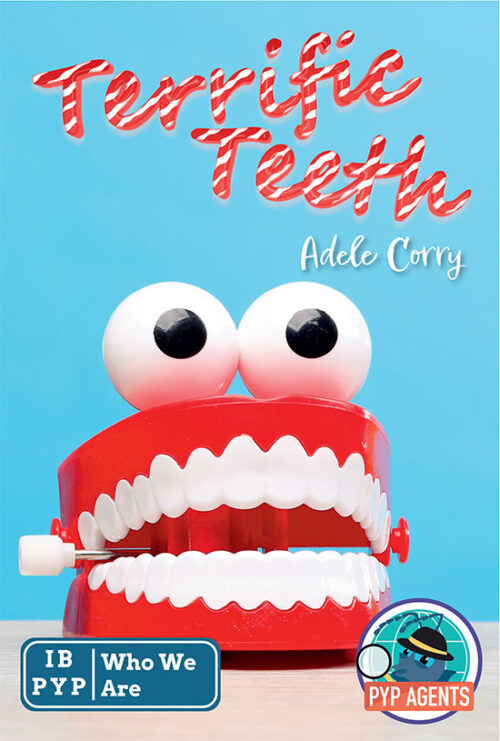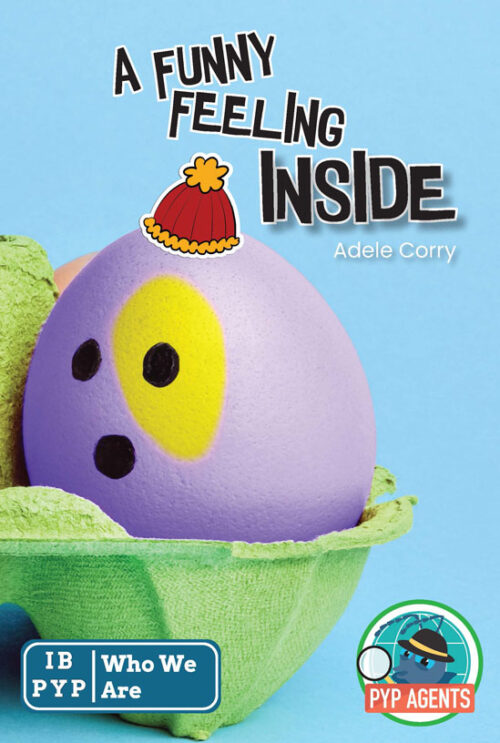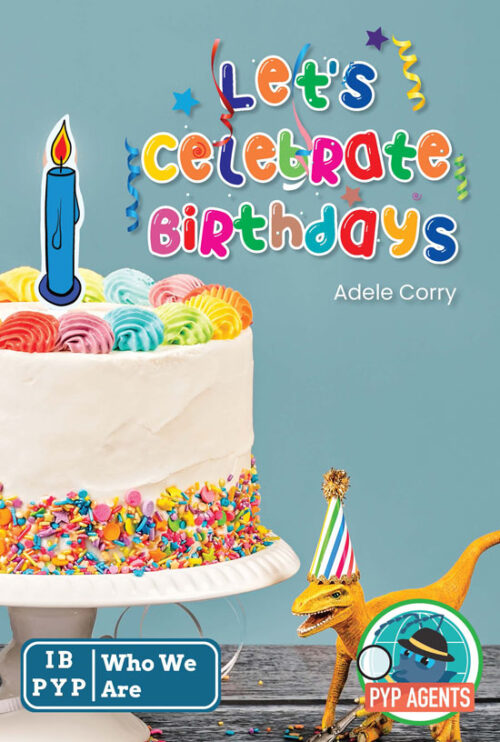-
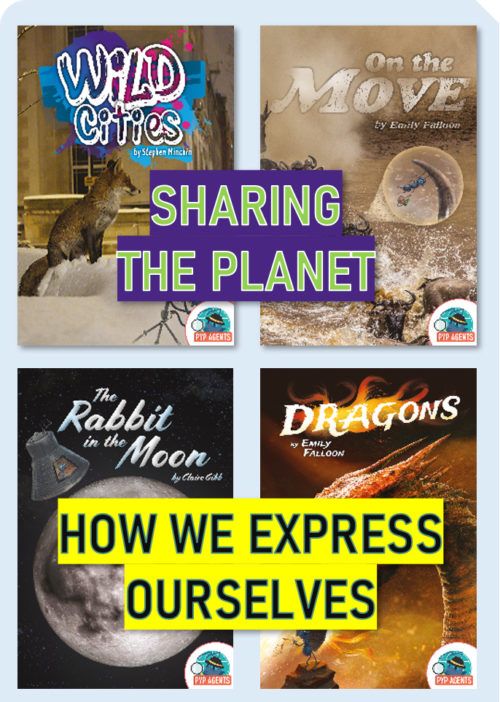 Four books that support student inquiry into:
Four books that support student inquiry into:- rights and responsibilities in the struggle to share finite resources with other people and with other living things; communities and the relationships within and between them; access to equal opportunities; peace and conflict resolution.
- the ways in which we discover and express ideas, feelings, nature, culture, beliefs and values; the ways in which we reflect on, extend and enjoy our creativity; our appreciation of the aesthetic.
-
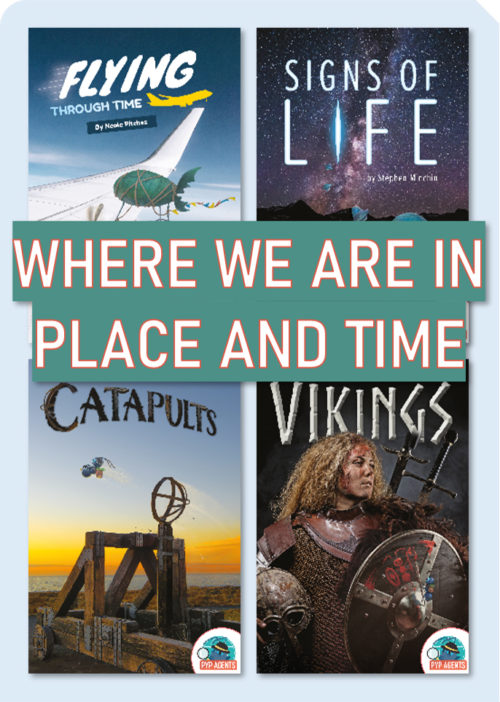 Four books that support student inquiry into the orientation in place and time; discoveries; the relationships between and the interconnectedness of individual and civilizations, from local and global perspectives. Flying Through Time: Flying today is very safe, but it hasn’t always been. Did you hear about the man who glued feathers to himself and tried to fly? How about the cat that flew a glider? You’ll be surprised at what you find when you’re flying through time. [Read more...] Signs of Life: Did aliens build canals on Mars? Does one of Jupiter’s moons really have an ocean filled with life? Over time, scientists have looked at and listened to deep space. They have been trying to answer the question: Are we alone in the universe? [Read more...] Catapults: Once upon a time, the sight of a catapult struck terror in the hearts of many people. But what exactly is a catapult? How does a catapult work? And what has happened to these once mighty weapons? [Read more...] Vikings: Imagine a Viking. What do you see? A big, bearded, scary warrior with a horned helmet? If so, this book is sure to change your view. Prepare to meet the real Vikings! [Read more...]
Four books that support student inquiry into the orientation in place and time; discoveries; the relationships between and the interconnectedness of individual and civilizations, from local and global perspectives. Flying Through Time: Flying today is very safe, but it hasn’t always been. Did you hear about the man who glued feathers to himself and tried to fly? How about the cat that flew a glider? You’ll be surprised at what you find when you’re flying through time. [Read more...] Signs of Life: Did aliens build canals on Mars? Does one of Jupiter’s moons really have an ocean filled with life? Over time, scientists have looked at and listened to deep space. They have been trying to answer the question: Are we alone in the universe? [Read more...] Catapults: Once upon a time, the sight of a catapult struck terror in the hearts of many people. But what exactly is a catapult? How does a catapult work? And what has happened to these once mighty weapons? [Read more...] Vikings: Imagine a Viking. What do you see? A big, bearded, scary warrior with a horned helmet? If so, this book is sure to change your view. Prepare to meet the real Vikings! [Read more...] -
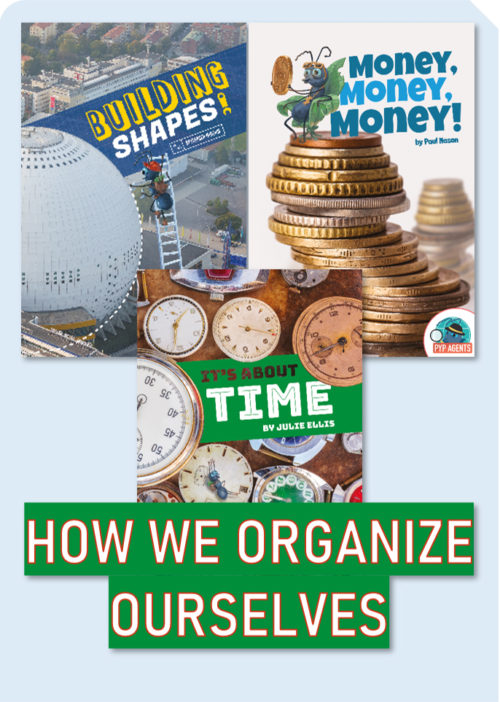 Three books that support student inquiry into the interconnectedness of human-made systems and communities; the structure and function of organizations; societal decision-making; economic activities and their impact on humankind and the environment. Building Shapes: What would it be like to work inside a circle? How about watching a movie inside a pyramid, or playing hockey inside a sphere? You’ll be amazed at the shapes of some buildings around the world! [Read more...] Money, Money, Money: How many chickens is one cow worth? What is the heaviest coin ever made? And how old is the oldest money? This book is really worth a read! [Read more...] It’s About Time: We count it, we save it, we use it, and we waste it. What is it? Time! Where does it come from though? Well, it’s about time you found out! [Read more...]
Three books that support student inquiry into the interconnectedness of human-made systems and communities; the structure and function of organizations; societal decision-making; economic activities and their impact on humankind and the environment. Building Shapes: What would it be like to work inside a circle? How about watching a movie inside a pyramid, or playing hockey inside a sphere? You’ll be amazed at the shapes of some buildings around the world! [Read more...] Money, Money, Money: How many chickens is one cow worth? What is the heaviest coin ever made? And how old is the oldest money? This book is really worth a read! [Read more...] It’s About Time: We count it, we save it, we use it, and we waste it. What is it? Time! Where does it come from though? Well, it’s about time you found out! [Read more...] -
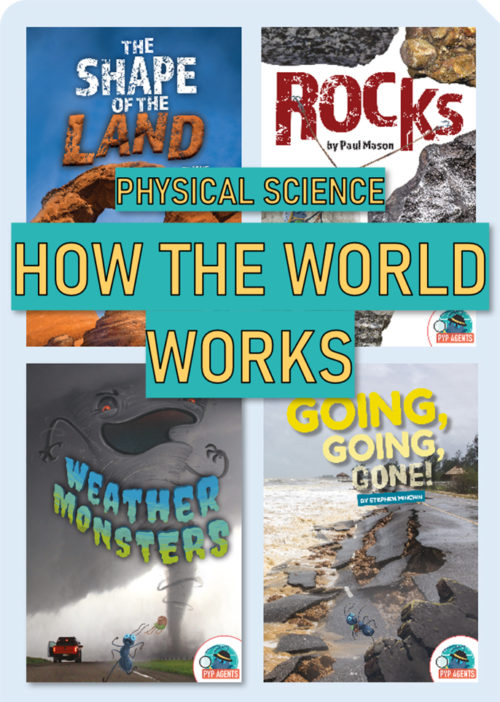 Four books that support student inquiry into the natural world and its laws; the interaction between the natural world (physical and biological) and human societies; how humans use their understanding of scientific principles; the impact of scientific and technological advances on society and the environment. The Shape of the Land: Mountains and canyons, lakes and land bridges … the land all around us has many different kinds of shapes. Why are some mountains taller than others, and some lakes deeper than others? [Read more...] Rocks: Have you ever wondered why some rocks are different colors? Or why some are heavier, stronger, or more beautiful than others? Why do some rocks float? And what makes diamonds so hard? All of these answers lie underground, and are waiting for you to dig them up! [Read more...] Weather Monsters: Are you scared of a little rain? Of course not! The weather is a normal part of our lives. But when weather monsters appear, be very afraid! [Read more...] Going, Going, Gone: You can’t move a mountain, right? Well, you can’t, but water, wind, and gravity can! How many years has it taken to make the Grand Canyon? How can a river change its course? And how can rocks travel at 200 miles per hour? [Read more...]
Four books that support student inquiry into the natural world and its laws; the interaction between the natural world (physical and biological) and human societies; how humans use their understanding of scientific principles; the impact of scientific and technological advances on society and the environment. The Shape of the Land: Mountains and canyons, lakes and land bridges … the land all around us has many different kinds of shapes. Why are some mountains taller than others, and some lakes deeper than others? [Read more...] Rocks: Have you ever wondered why some rocks are different colors? Or why some are heavier, stronger, or more beautiful than others? Why do some rocks float? And what makes diamonds so hard? All of these answers lie underground, and are waiting for you to dig them up! [Read more...] Weather Monsters: Are you scared of a little rain? Of course not! The weather is a normal part of our lives. But when weather monsters appear, be very afraid! [Read more...] Going, Going, Gone: You can’t move a mountain, right? Well, you can’t, but water, wind, and gravity can! How many years has it taken to make the Grand Canyon? How can a river change its course? And how can rocks travel at 200 miles per hour? [Read more...] -
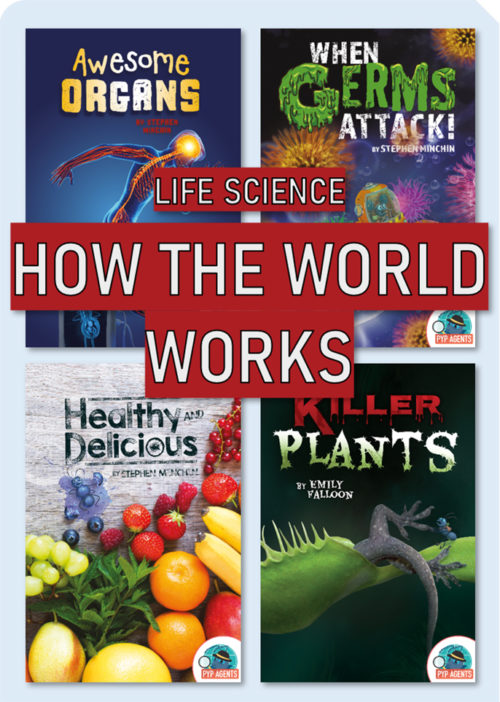 Four books that support student inquiry into the natural world and its laws; the interaction between the natural world (physical and biological) and human societies; how humans use their understanding of scientific principles; the impact of scientific and technological advances on society and the environment. Awesome Organs: Your organs are the most important things in your life. Why? Because they work hard every day and night to keep you alive! But how much do you really know about your amazing and awesome organs? [Read more...] When Germs Attack: There are germs all around us. Germs make us sick. Find out what germs are, how to keep them away … and how far a sneeze can fly through the air! [Read more...] Healthy and Delicious: Will your teeth fall out if you don’t eat enough fruit? What will happen if you don’t drink enough water? And what on earth is a rambutan? If you want to be fit and healthy, this book is for you! [Read more...] Killer Plants: Killer plants are on the loose, and they might be in your neighborhood … But should you be worried about these creepy killers? Read on, if you dare … [Read more...]
Four books that support student inquiry into the natural world and its laws; the interaction between the natural world (physical and biological) and human societies; how humans use their understanding of scientific principles; the impact of scientific and technological advances on society and the environment. Awesome Organs: Your organs are the most important things in your life. Why? Because they work hard every day and night to keep you alive! But how much do you really know about your amazing and awesome organs? [Read more...] When Germs Attack: There are germs all around us. Germs make us sick. Find out what germs are, how to keep them away … and how far a sneeze can fly through the air! [Read more...] Healthy and Delicious: Will your teeth fall out if you don’t eat enough fruit? What will happen if you don’t drink enough water? And what on earth is a rambutan? If you want to be fit and healthy, this book is for you! [Read more...] Killer Plants: Killer plants are on the loose, and they might be in your neighborhood … But should you be worried about these creepy killers? Read on, if you dare … [Read more...]


